
Star Ocean The Second Story R Review
Don’t take this as gospel, but in my own personal experience, there are broadly two types of Star Ocean fan: the ones who have enjoyed several entries, and the ones whose warm feelings extend solely to Star Ocean: The Second Story. It doesn’t matter that it’s a sequel to a game comparably fewer people have played - it stands alone just fine. Nor does it matter that there have been four further mainline installments since - it’s like they’re all on one side of the conversation, and The Second Story dominates the other. Among JRPG enthusiasts, Star Ocean: The Second Story is frequently cited as one of the best ever made; all of this is to say, the remake had a lot to live up to.
They did it. Gemdrops — the studio behind Star Ocean: The Second Story R — has brought this RPG forward in a way that makes it all the more enjoyable today, all without losing sight of what made the original version such a classic. By judiciously examining how decades of advancements in the gaming industry have created certain modern quality-of-life expectations, the developers have revamped The Second Story in a way that makes it more accessible, more easily replayable, and quite frankly, better than ever before.
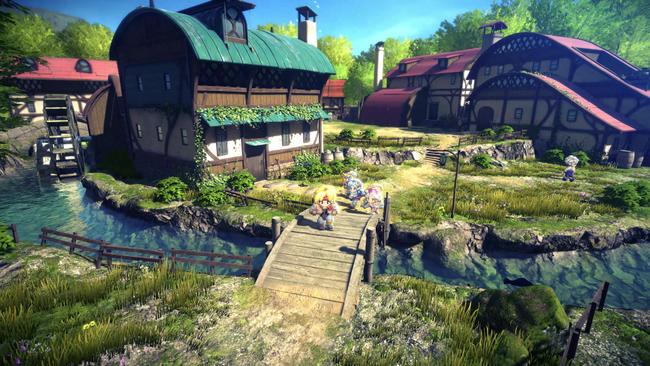
For those who are new to the game, here’s a quick rundown: its heroes are deuteragonists Claude C. Kenny and Rena Lanford. You choose between the Pangalactic Federation ensign or the mysterious magic-casting villager at the very beginning, but the character you didn’t select effectively plays the role of runner-up protagonist throughout the story. In other words, you’re getting a big taste of Star Ocean’s trademark ‘science fiction meets high fantasy’ themes regardless, but your primary perspective will either be Claude and his coming-of-age Star Trek vibe, or Rena and her more medieval understanding of the world around her.
Battles are action-based, with players able to select any party member to control outright. There’s a sizable difference in one’s approach to combat depending on whether they’re playing as a melee-oriented fighter or a sorcery-swirling caster, as you’ll want to get close to engage the enemy if you’re a sword-wielder like Claude, or stay back and harass them with spells, healing your allies as needed, if you’re someone more akin to Rena.
Narrative and combat are all rock-solid stuff in their own right, but the real treats in Star Ocean: The Second Story stem from the game’s fabulously complex, interweaving systems of skills, talents, specialties, and the hours-consuming delight that is ‘Item Creation’. Make no mistake, this is a game whose difficulty you can rip apart easily and entirely, if you know a few simple tricks on what weapons to craft and when you can first acquire the ingredients for them.
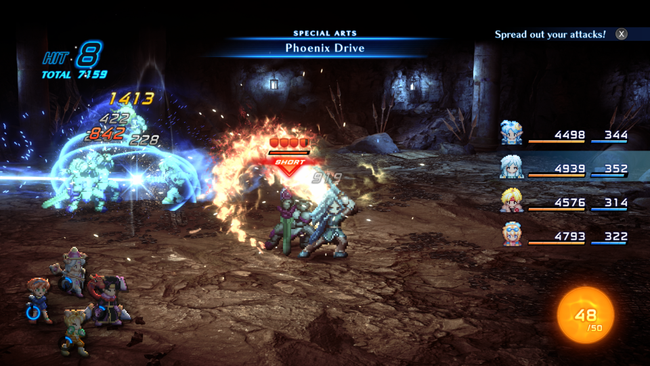
Equally beloved is the ‘Private Action’ system, through which your party of up to eight characters (out of a possible 12 on PlayStation, or 13 in the remake and on PSP) can wander off to various corners of a settlement you’re visiting, allowing you to engage in frequently interactive bonus scenes that are not just great character moments, but can play a critical role in determining who your chosen hero ends up with at thegame’s finale.
So, that’s the original Star Ocean: The Second Story. Lots to love, but not without some key frustrations. In many ways, the passage of time has been kind of unkind to it - for as grand as its varied mechanics may be, they’ve always been irritatingly obtuse, with too few tutorials to get a real feel for what you’re doing until trial-and-error clues you in.
Some odd translation tidbits can leave first-time players bewildered as to what they’re doing when improving skills with the finite resource of Skill Points; never mind the headache of fully wrapping one’s head around what each Super Specialty does, and why we should care. Factor in a fairly high encounter rate and an equally fair bit of backtracking, and top it all off with everyone’s least favorite flaw: a downright criminal lack of indication for when a new Private Action is available for too limited a time - sometimes halfway across the planet from you.

Hence, when Star Ocean: The Second Story R was announced, I had a pretty good feel for what I hoped Gemdrops would do with it. Of course, everyone’s attention was initially tied to the surprising new graphical style - the environments have been transformed into a more fully three-dimensional representation, a drastic departure from the more traditional overhead perspective of the original. Meanwhile, the characters, though more detailed than ever, are essentially still the same sprites - this had the potential for an awkward artistic clash, though early footage seemed promising.
On that front, I can confirm that there was never a point in my playthrough of Star Ocean: The Second Story R where I felt like the charm was no longer there; this fusion of graphics has merely made the planet of Expel (and beyond) seem bigger, grander, lovelier to behold. Character designer Yukihiro Kajimoto, whose past works include the fifth and sixth Star Ocean titles, breathes fresh air into the cast’s portraits with stunningly detailed depictions that stay true to the spirit of them all.
But what I really wanted to know was how well the developers would handle the more cumbersome elements. I didn’t want to have to explain to friends fresh to the series what the heck the deal is with Talents, or woefully agree that getting around from place to place can be a real chore, or the most efficient ways to spend Skill Points properly.
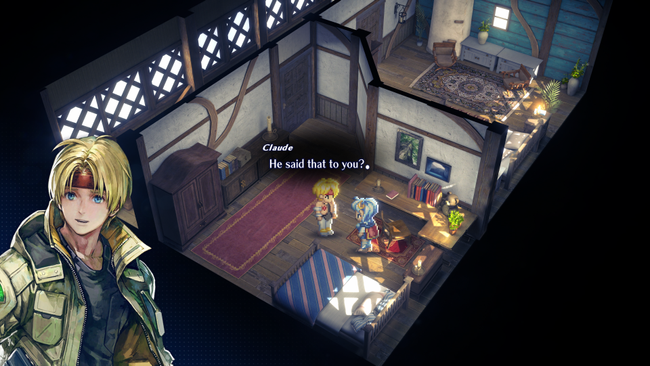
Thankfully, Star Ocean: The Second Story R truly feels like an RPG from 2023. There are so many improvements it's hard to know where to even begin.
Enemies are no longer random, but appear as icons on the screen so that you can confront or evade them. (The screen still shifts to a separate format for the fights themselves, but this is to be expected.) Not only is fast traveling an option, but I kid you not, I’m not sure I’ve ever seen a game so full to bursting with available fast travel spots. It’s like every other spot in any given town or dungeon in the entire game can be warped back to nearly instantaneously (on PS5, at least). You can instantly travel from the top of Lasgus Mountains to the end of the Salva Mine in a flash. You can even fast travel from one side of a city to the other to save yourself the short walk. You will never lament the trip from Krosse Cave back to the city as I once did.
Tutorials are indeed appropriately commonplace, though for as many as there are, they’re spread evenly enough not to come across like they’re bombarding the player after the first half an hour or so. Every single Talent, Speciality, and Super Speciality has a tutorial screen you can pop up directly from that menu to get a quick description (and helpful images) about what it does. In Item Creation, the UI itself helps to outline what can be crafted so you don't feel completely blind to what you are doing.
Not only can players now grasp the full depth of the many crafting systems from the moment they partake, but you’re no longer restricted to a limited number of Skill Points. In the original, SP was a finite resource, and along with it came a sense to spend it wisely; as efficiently as possible, because once you run out, you're out. But that's not the case anymore, there are ways of acquiring more even should you reach max level (even just from regularly battling), so you needn’t fear making any upsetting mistakes in point distribution that could rear their wicked head in the original.
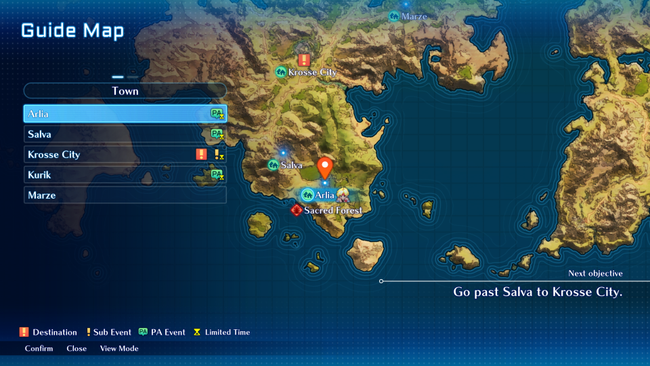
Best of all, the availability of Private Actions is always an open book to you. All you’ve got to do is check the map, where a symbol will denote any current locations for them. You no longer need to randomly (and slowly) tour the world guessing which town has a Private Action to see at any given time. Since PAs are mostly time-sensitive, you’ll want to go ahead and knock everything out as soon as you see it, but that’s hardly a source of stress when you can instantly zip all the way back to starting village Arlia whenever you need to, from wherever you are.
It would be remiss of me not to mention the many additional battle mechanics in Star Ocean: The Second Story R, including a circular gauge that fills up between fights to grant fun bonuses based on your chosen starting formation. There’s also ‘Assault Action’ - periodically, you’ll be able to summon standby characters to briefly assist, or (cooler still), rely upon the powers of protagonists from other Star Ocean games instead.
The are also hundreds of bonus Missions that have been added to the game. You can kind of think of these like Battle Trophies found in some later Star Ocean titles, although not nearly as tedious, and each rewarding you with items, equipment, SP, money, or more. Finally, a New Game+ mode allows players to check out the other protagonist or use different parties of characters with ease.
All of this new hotness does take its toll on the game’s sense of balance. While the developers have mentioned an increase in The Second Story R’s battle tempo - and it’s true, fights are faster - I’m not sure any buffs they’ve given to the bosses have been enough to rival the boons of Assault Action and other remake-exclusive fare. If you already knew how the break the original game open with Item Creation, new components allow you to break it even further.
It’s worth restating, of course, that it’s a ton of fun to tear Star Ocean’s difficulty into pieces with tremendously overpowered weapons and armor, in which case no amount of conventional stat upticks would save the story’s boss fights. Still, my advice? If you’re looking for a challenge, crank it up to ‘Universe’ difficulty right off the bat. Otherwise, you’ll be waiting until the postgame.
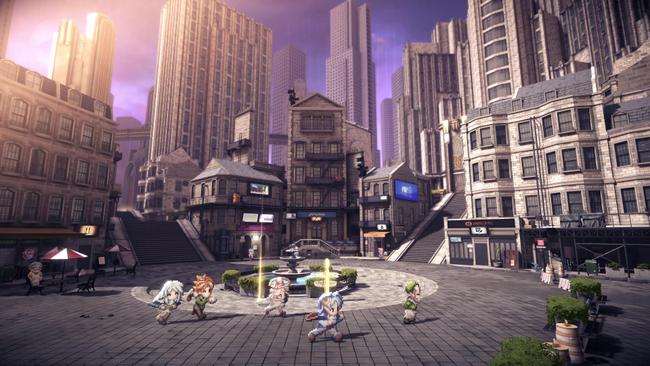
On the modernization front, then, Star Ocean: The Second Story R mostly succeeds. But what about all that totally new content that publisher Square Enix has been touting? Here’s the bulk of it: guild quests, a fishing mini-game, and a more fleshed-out overworld.
Star Ocean: The Second Story’s guilds once taught specific skills for a fee; these ‘skill sets’ no longer need to be earned over time, so the guilds now provide a steady stream of Item Creation Missions. It’s nothing special in its own right, but it’s a great source of rewards, and it serves as a fine lesson on how the Item Creation process works, so that you’re all the more confident when you’re crafting your own creations.
Fishing is, simply put, better than I feared. The actual process of fishing is almost laughably simple, but then, perhaps that’s for the best. The new character who you’ll meet in conjunction with the mini-game is a hoot, though, and you’ll get some sweet prizes from catching every fish.
This brings us to that dramatically revamped overworld, since the plethora of fishing spots are mainly found while exploring abroad. Taken at face value, this is still the same JRPG world map it’s always been. You’re still massively oversized relative to the towns you’ll enter after you’ve bumped into them from outside. But a lot has been added along the way, from treasure chests and new special viewpoints (many of which also exist within set areas; finding them grants extra experience points) to surprisingly vast expansions like a sprawling desert on the far end of an early-game mountain. It’s cool.
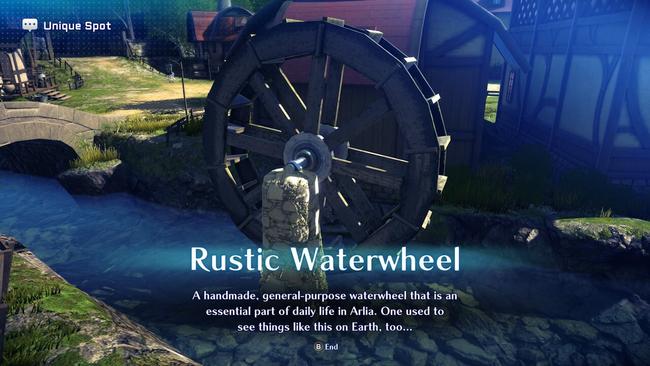
For all that it does well, there are still a handful of things I wish Star Ocean: The Second Story R managed to do just a bit better. I mentioned the questionable reduction in difficulty already, but I’ll also note that I wish enemies in the field weren’t just one of three colors of nebulous cloud-like… things. Rather than seeing the foe you’re about to face, you’ll see a weird ‘dark force’ until the battle screen has loaded, replacing them with the actual enemy. It’s not bad, so much as bizarre, and it stands at odds with the lavish degree of detail on display elsewhere.
And this last one is as ‘personal taste’ as personal taste can get, but I’m not as in love with all of Motoi Sakuraba’s new song arrangements as I thought I would be. To be clear, part of that is on me - I grew up listening to Star Ocean: The Second Story’s soundtrack time and again. Sakuraba delivered something incredible the first time around. If I’m that attached, perhaps it’s harder for me to grow so fond of the new stuff. But maybe the original world map theme for Expel just ‘hits different’, as the kids say, for which I’m grateful I can swap back to the unaltered score at any time via the settings.
No collection of quibbles has stopped me from largely adoring this remake. Not only has it improved almost everything that needed improving, but there’s a satisfying cadence in the rhythm of crafting, combat, checking your challenge rewards menu for spiffy little achievement prizes (it’s like Animal Crossing’s Nook Miles, oh yes), glancing at your map for more Private Actions, and finally advancing the plot for a bit. This game feels great to play, and that’s what matters most.
Star Ocean: The Second Story R has brought a cult classic into a new era. It’s been thoughtfully retooled, but it’s still packed with all the heart and soul of the original. Graphically, it’s gorgeous. It still sounds sublime, subjective song preferences aside, and the new quests and features range from fair to fabulous. It’s one of my favorite video games in even finer form.